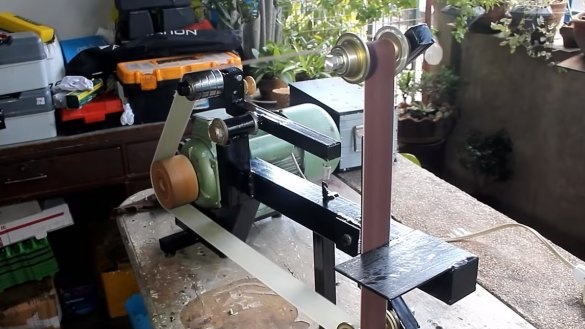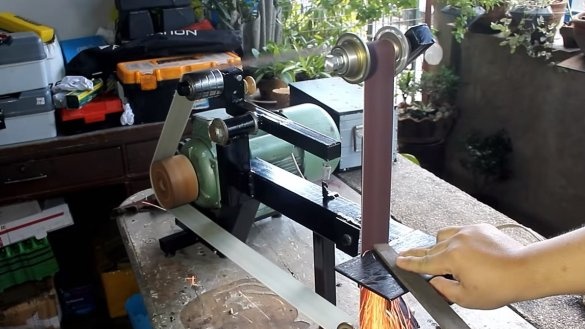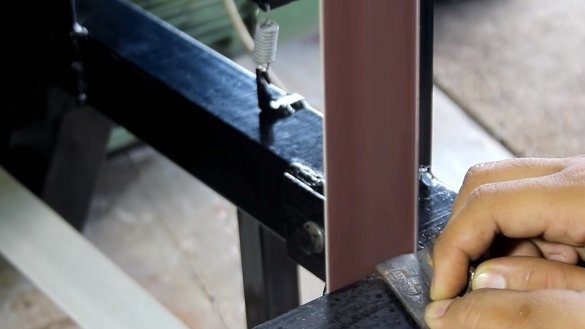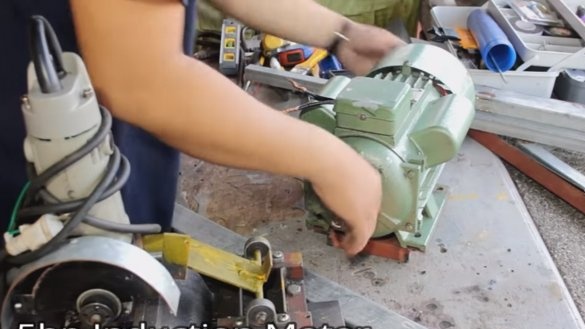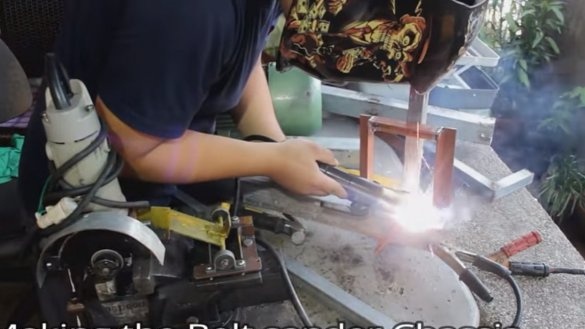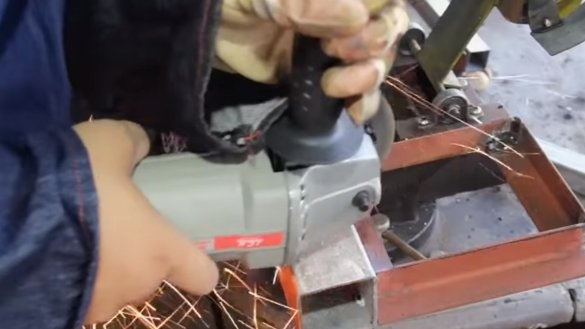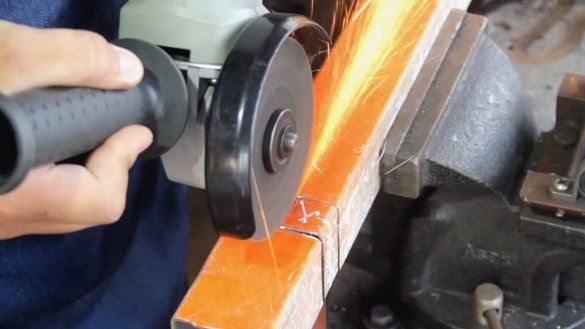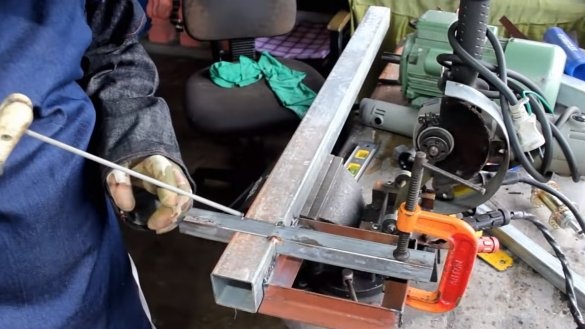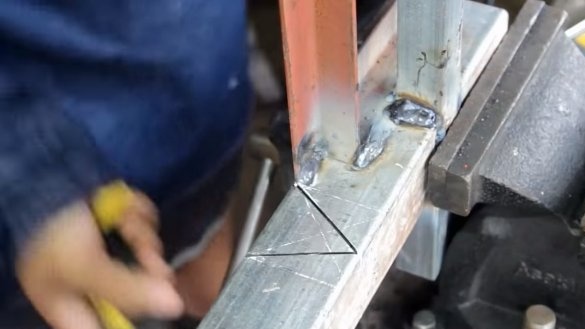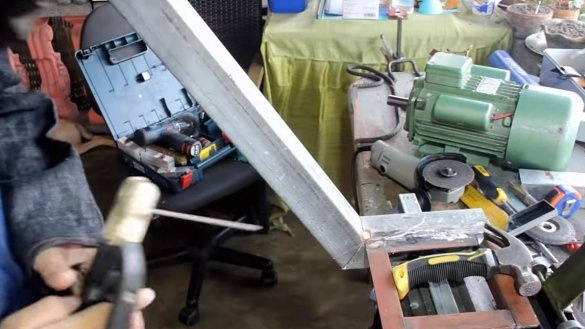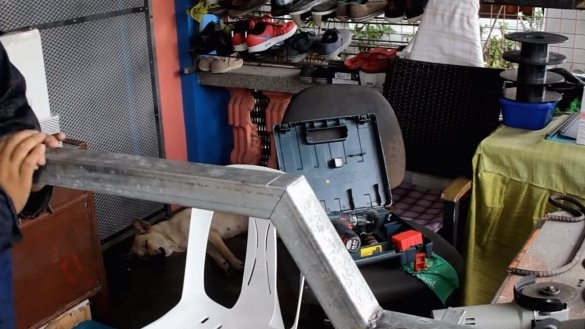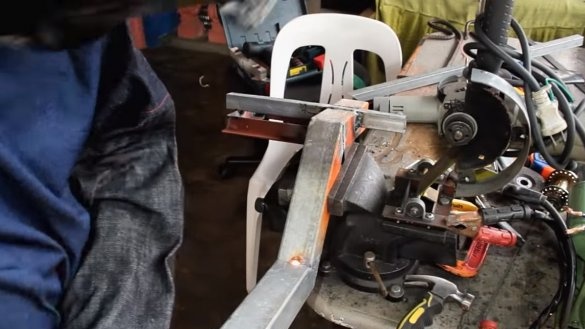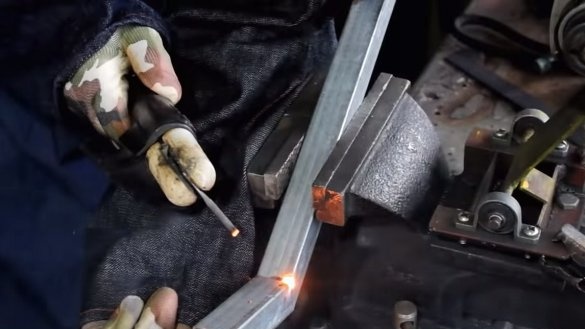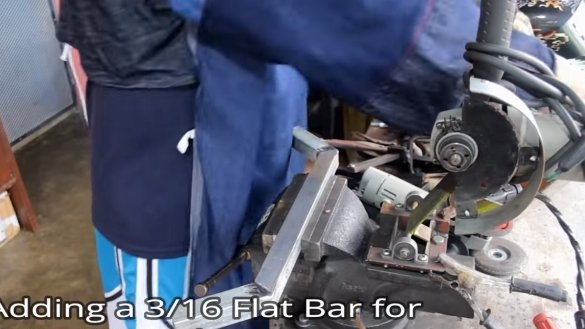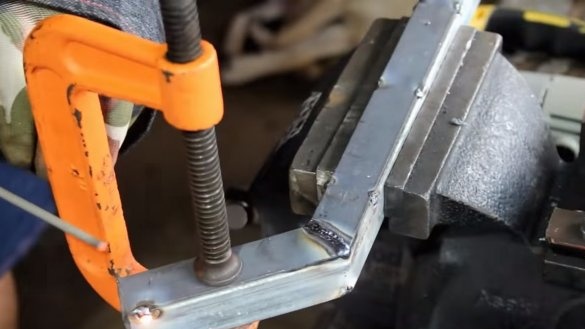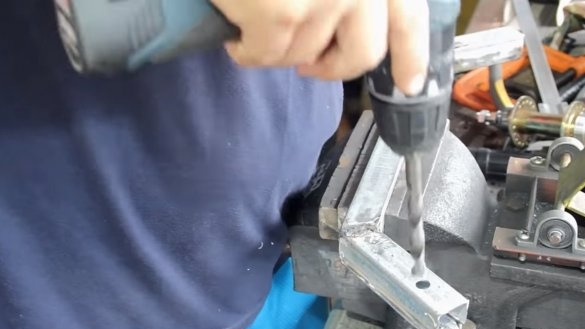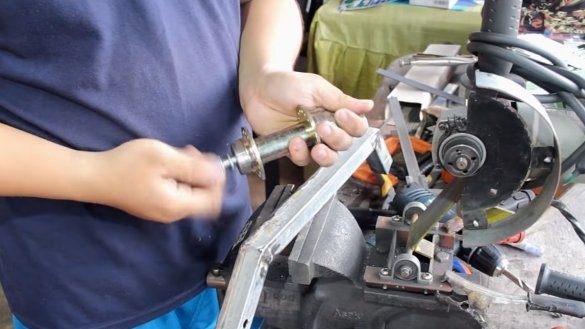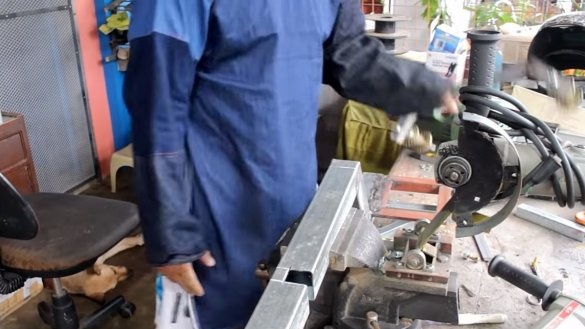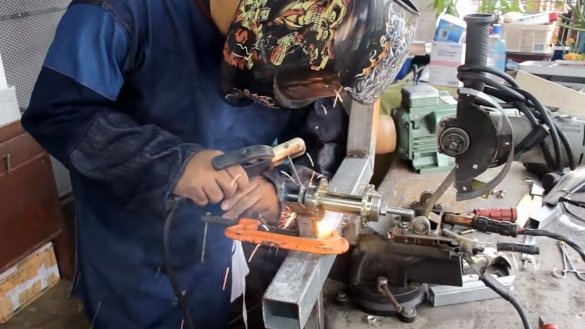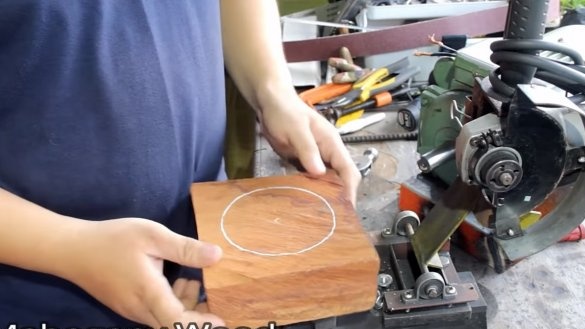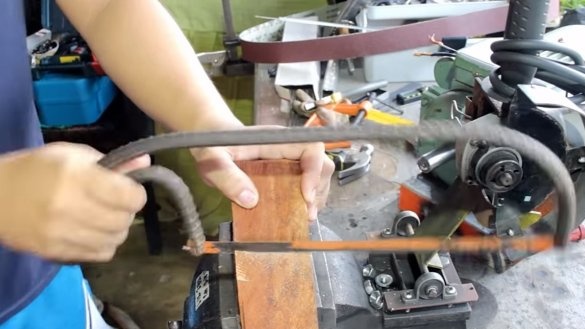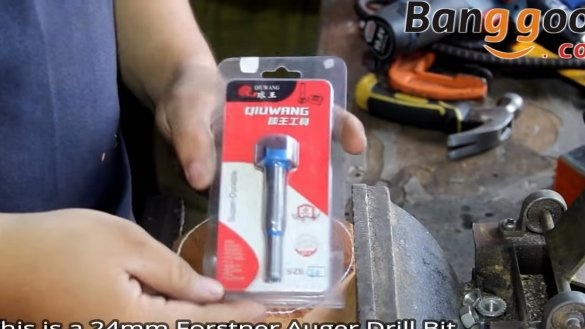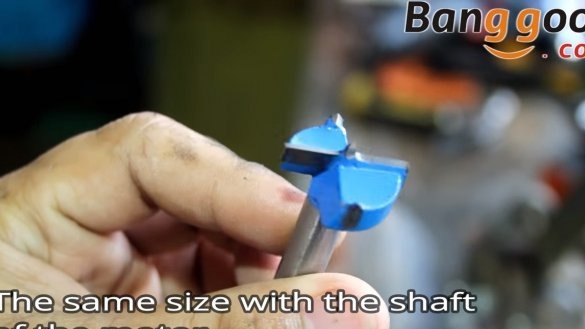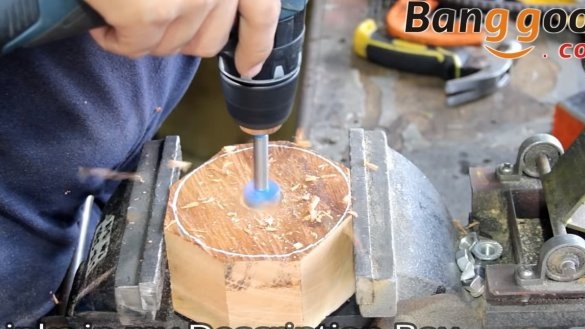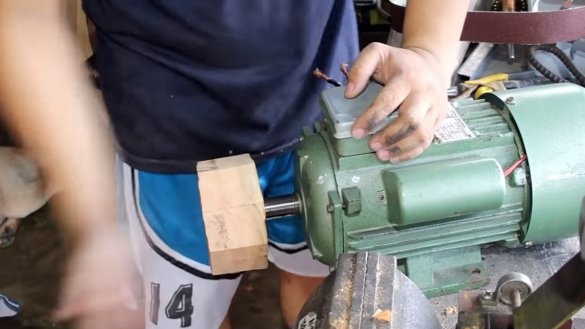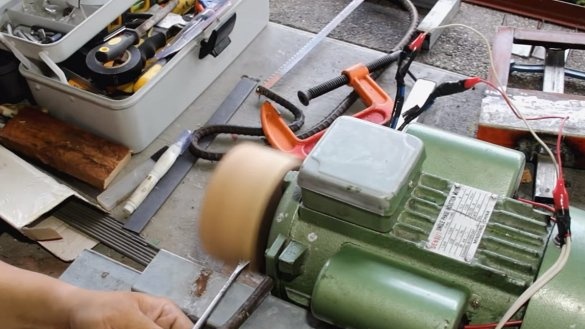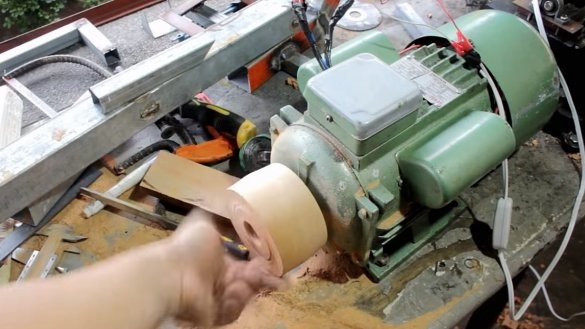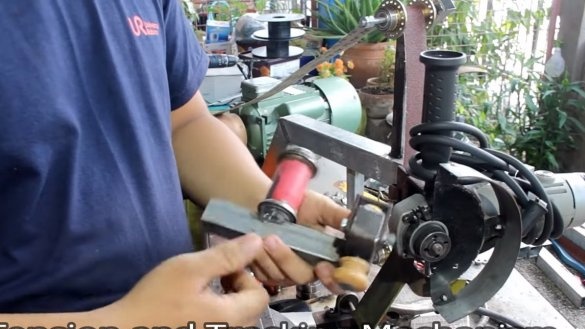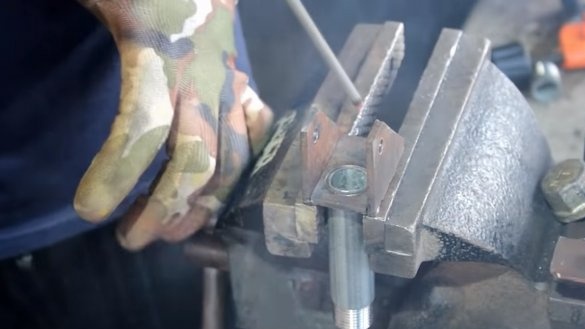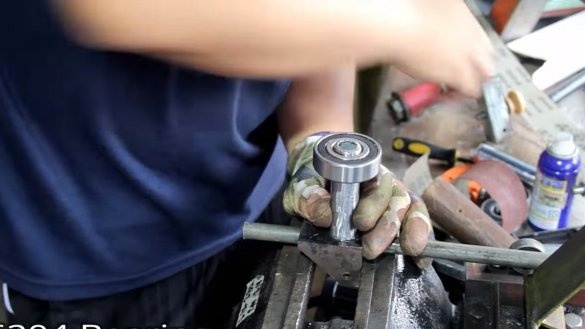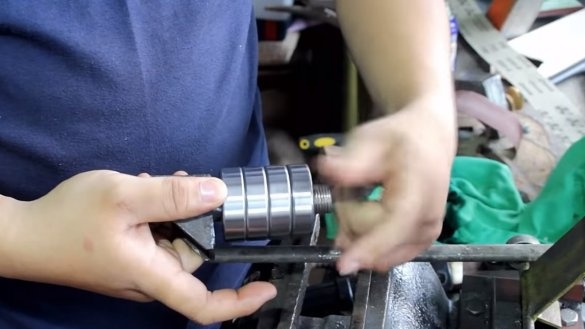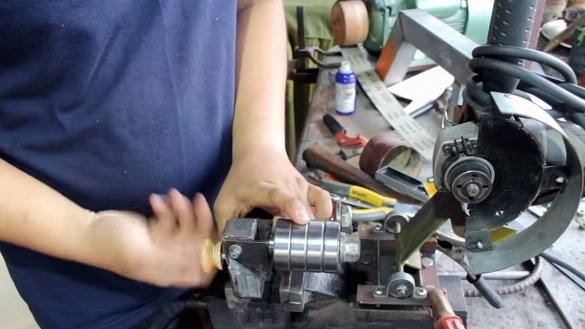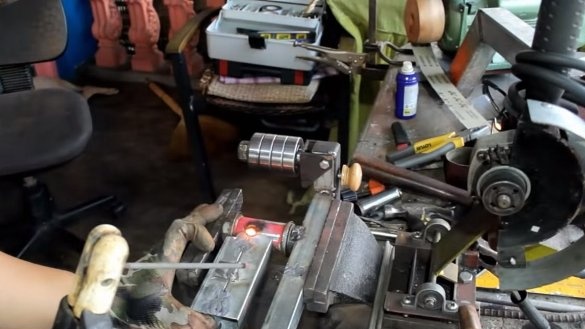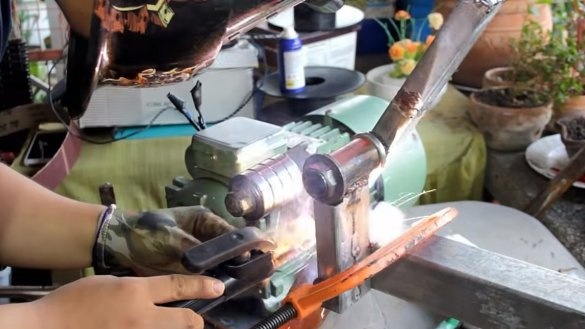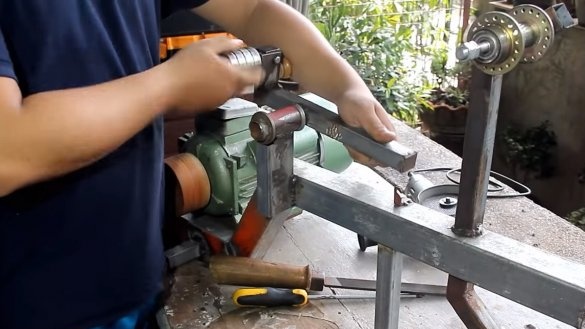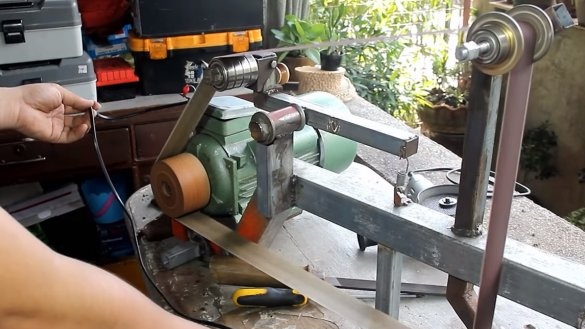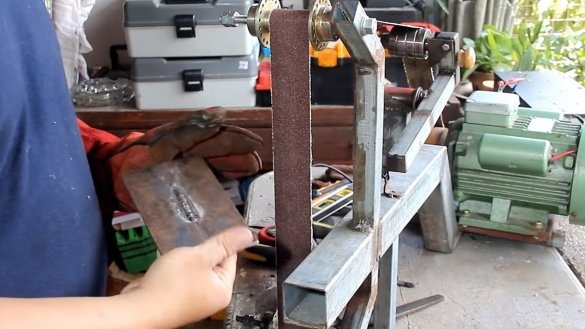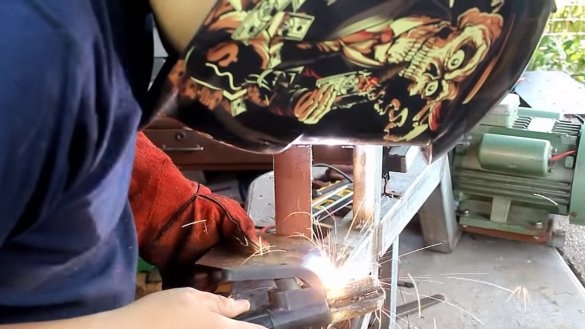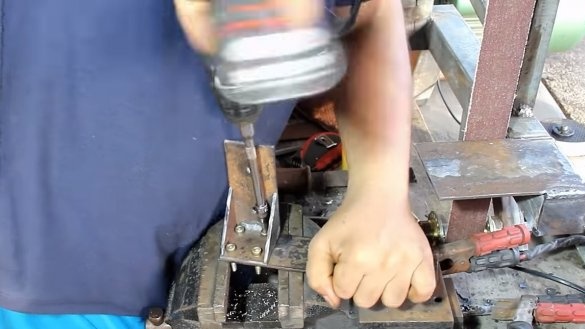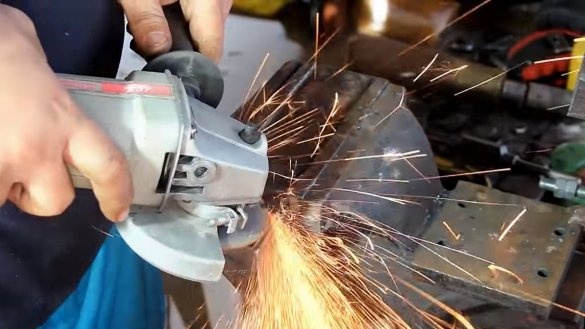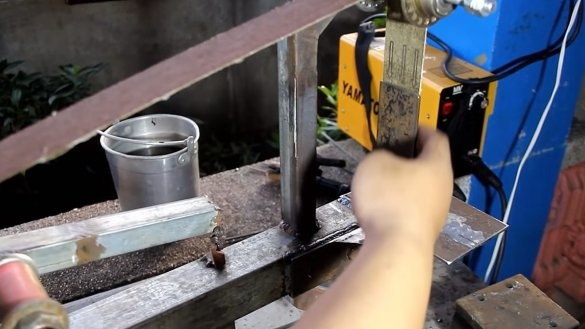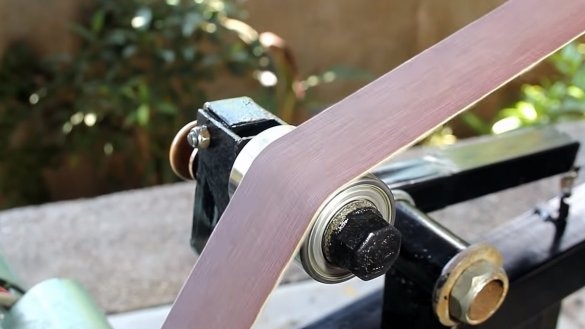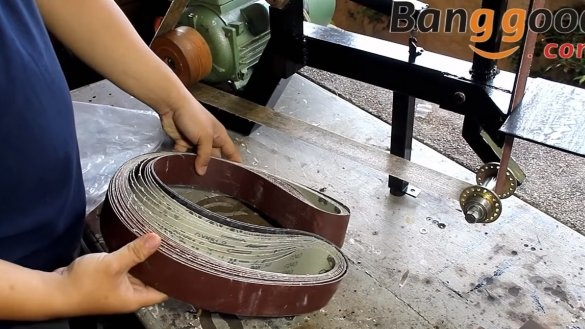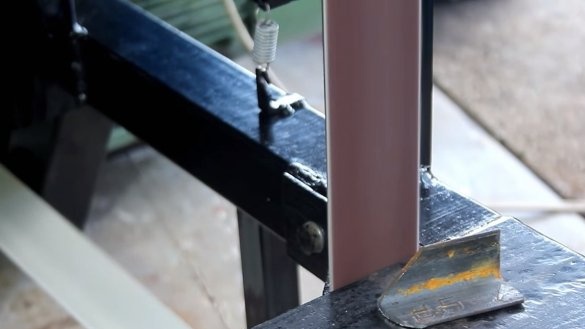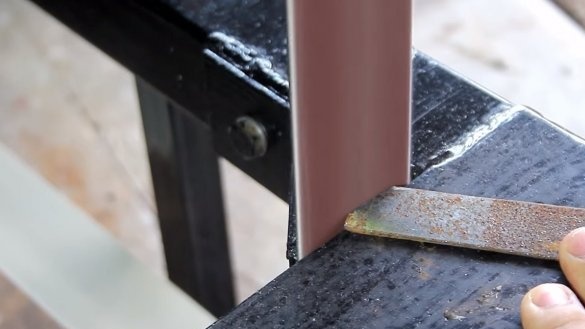I welcome fans to craft, this time we will consider a method of manufacturing a belt sander with a belt size of 2x72. The machine is powered by an engine with a power of just over 1.1 kW (1.5 hp). Such power is quite enough for metal processing, the author easily polishes a file from solid carbon steel and at the same time thick sparks are streaming.
The machine is assembled from available materials, in total three rollers are used, not counting the lead, which is made of wood. Two rollers are made of bushings of the front wheels of the bicycle, and another roller is made of bearings, it is tasked with tensioning the grinding belt. And the frame was easily and quickly welded from a square steel pipe. Let's consider in more detail how to make such a machine! Tests of his work can be seen in the video below.
Materials and tools used by the author:
Material List:
- square pipes;
- Sheet steel;
- bolts and nuts;
- bearings;
- two bushes complete from the bicycle wheel;
- spring;
- grinding belts 2X72;
- an engine of 1.1 kW or more;
- paint;
- wood for the manufacture of the drive wheel.
Tool List:
- drill;
- grinder;
- welding machine;
- spanners;
- tape measure and marker.
Machine manufacturing process:
Step one. Weld the frame
The frame is assembled quite simply, here we need steel square pipes, we cut and weld in accordance with the design of the machine. Particular attention should be paid to mounting the engine, under it you need to make a frame and then fasten it to it with bolts and nuts using grovers. The frame can be welded from steel pipes, and then the steel plate is welded on top, which will make an excellent base for the engine.
We install hubs on wheels on the frame of bicycles, they will work as driven rollers of the machine. We drill holes in the frame and fasten the axles with nuts. It is necessary to tighten securely, and so that the pipe does not flatten, a piece of the metal pipe can be welded into it.
Step Two Production of a driving shaft
The drive shaft is made of wood, it is easily made, and copes with its functions without any problems. Here we need a piece of a thick board or other similar material. Determine the size and draw a circle. Next, trim the excess using a hacksaw or other similar tool.
To form a circle, we will use the engine as a lathe, for this the part needs to be installed on its shaft. We take a drill and a bit of suitable diameter, drill a hole in the workpiece according to the diameter of the motor shaft. We press the workpiece and grind the impeller. Final processing is carried out by sandpaper.
Step Three Tensioner
The belt should be in a tight state, for this we do the tensioner. It is a lever pivotally mounted on the frame on which the roller is mounted. To make the roller, you will need bearings and an axis, which can be a bolt. At the end, a spring is installed between the end of the lever and the frame, which lifts the roller to the belt, thereby pulling it. The spring tension force is determined experimentally.
The roller on the lever is also pivotally mounted and its angle is changed using a bolt with a handle. This is necessary to center the belt on the rollers.
Step Four Final steps
At the end, you will have to weld the thrust pads for work, and also the machine needs to be painted so that the metal does not rust and looks good. That's all, install the belt and you can get to work. The machine easily grinds the file and other pieces of iron. The eggs are thick when working, which means that we have enough power and belt speed. That's all, the project is over, I hope you liked it. Good luck and creative inspiration, if you decide to repeat it. Do not forget to share your homemade with us!

